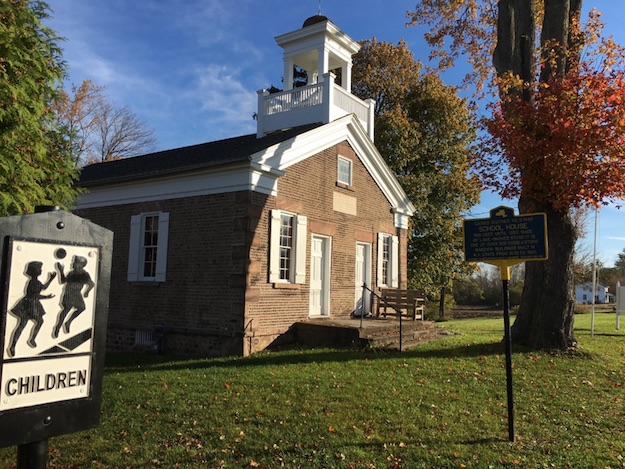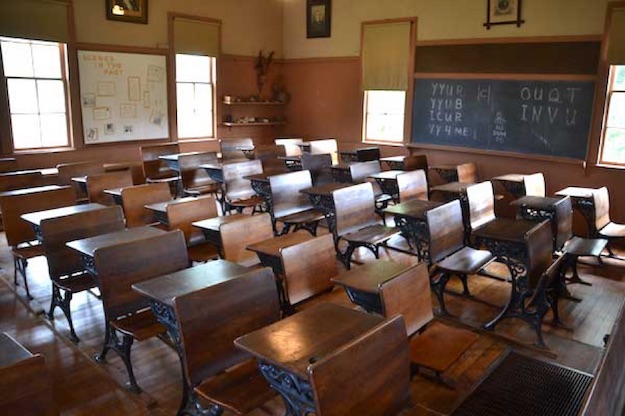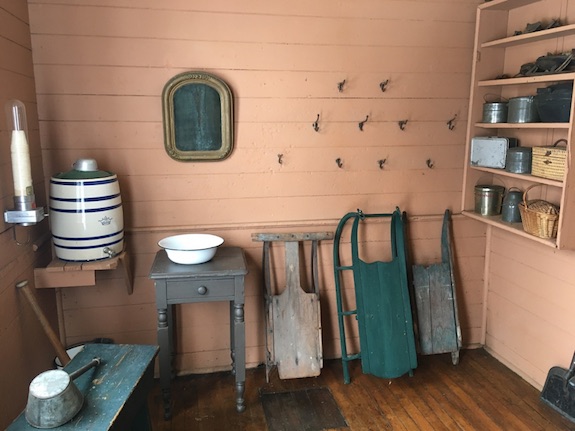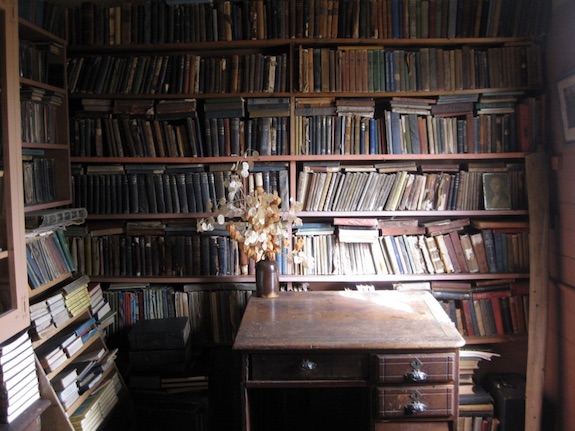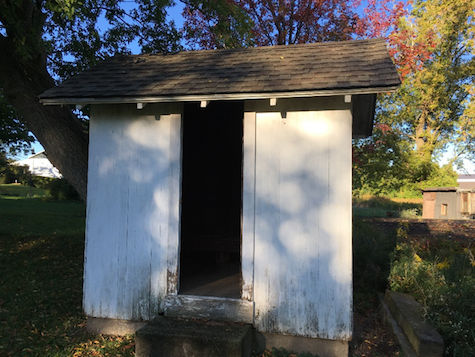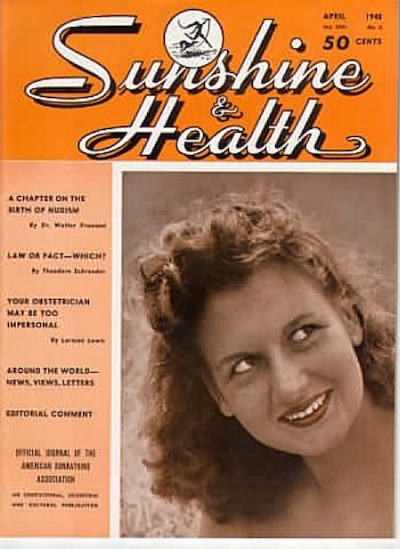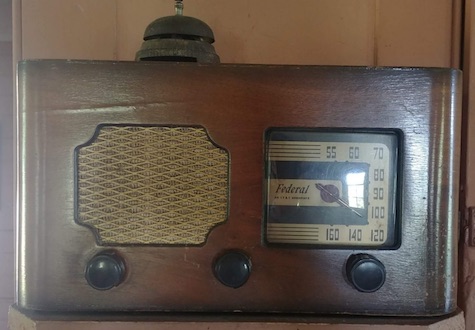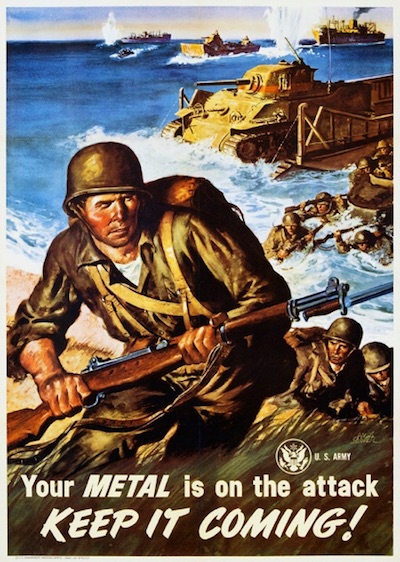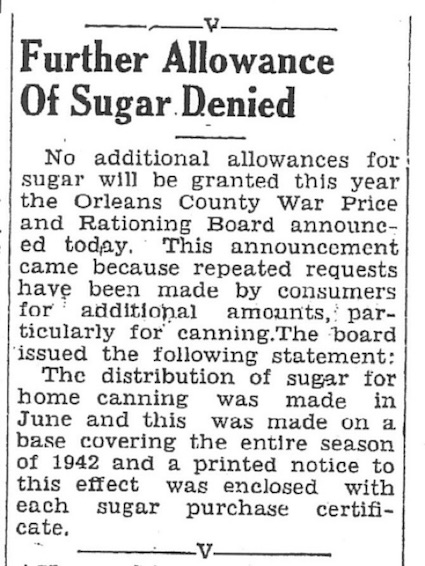Historic Childs: Reflections from a student in the one-room schoolhouse, Part 1
Note from Doug Farley, Cobblestone Museum Director: We are pleased to present this autobiographical essay written by Nancy Jane Wilson Berger (1935-2015). Nancy spent her childhood living in a cobblestone house near and attending the Cobblestone District #5 Schoolhouse in the Hamlet of Childs. We are very grateful to Nancy’s husband, Frank Berger, for sharing this wonderful retelling of Nancy’s childhood memories.
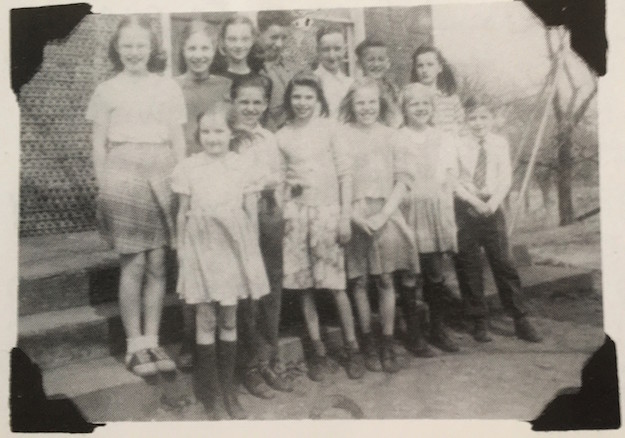
School District #5 in 1946 – Phoebe Beales, Teacher. (Front Row, from left) Nancy Covis, William Covis, Evelyn Becker, Edna Becker, Kathleen Covis and Alan Kidder. (Back Row, from left) Sandra Kidder, Marjorie Becker, Nancy Wilson, Walter Klatt, Edward Janus, Daniel Janus and Laura Klatt.
By Nancy Jane Wilson Berger
I wondered why my mother had tears in her eyes when I left for school for the first time. It was a typical fall day and one that I had been looking forward to for some time. I had reached the ripe old age of six and thought I was pretty well grown up to be able to go to school with the rest of my friends.
It was Gaines District #5, a country school located on Route 104 commonly called the Ridge Road. A one-room country school with grades 1 through 7, one teacher with a visiting music teacher, a religious education teacher, and even a very old retired physician who came once a year to give us a physical exam.
It was a typical one-room schoolhouse with rows of desks running parallel with each other. They grew in size as the children grew – thus the small ones were to the left and they got progressively larger as the rows went to the right. We could hardly wait until we were big enough to sit in the “special” desks. These were separate units with swivel seats and the tops opened up so that you could see what was inside. A student had to earn the right to claim one of these seats as their own.
The front door opened into the entry. There was a “U” shaped coat rack supplied with plenty of hangers. To the left of that was a series of shelves which held lunchboxes, etc. On the front wall, next to the door was a shelf with a sink and a clay water-cooler. Perpendicular to that was a bench which helped in the removal of boots and which provided storage space underneath for these. To the right was the door to the basement which housed a mammoth old coal furnace, a huge coal bin and a multitude of other things that we were never brave enough to explore.
The furnace, however, was something of a monster which seemed to have a life of its own. Many a morning throughout the seven years that I attended this house of learning, we were met at the door by our teacher who told us to return home because the coal gas was so strong we surely would have been overcome. No one knew exactly why this happened, but I think that occasionally this mysterious hulk decided that it needed a day of quiet and no children’s footsteps overhead to give it a headache so it spewed forth this nauseous gas like an octopus spitting out its “ink” to scare away predators. At any rate, the opening of windows and some sort of magic performed by the teacher would usually bring this problem to its knees and we would be back to normal by noon.
Occasionally, instead of nauseous gas it decided to try smoke. Sometimes it would be so thick you couldn’t see more than three feet away. Another vacation! However, it did have its good points. Besides keeping us warm and cozy it provided an oven for baking potatoes. Teacher would place whole potatoes just inside the furnace door on a little shelf and by noon we had yummy baked potatoes for lunch. I don’t think baked potatoes have ever tasted that good since.
So, you see, we didn’t have snow-days like they do today. We had smoke and gas days! We did have a snow day sometimes, but they were few and far between. Because we provided our own transportation which was usually by foot, if we could plow through the snow we went to school. If we couldn’t, we stayed home.
At the opposite end of the front of the school was the library, which also served as a whipping room. Yes, back in those days we got a good spanking if we didn’t behave. I was lucky enough to never get one. (I was such a good little girl.) However, I did get reprimanded more than once for talking or laughing. I was usually lucky enough to blame it on my friend Ed Janus who, more than once was taken to the whipping room and got his seat tanned!
The “bathrooms” were small buildings – one for the girls and one for the boys – behind the school with privacy fences a few feet from the doors. If we needed to go visit the privy (as it was called) we had to raise our hand and when we were given permission to go, we had to put our initials on a small blackboard at the front of the room because only one person could go at a time. I have some stories about the “privies” also.
We had a boy in school whose name was Walter. Walter took it upon himself to teach the boys about the anatomy of the opposite sex. It seems that he had found some magazines called “Sunshine and Health” which was published by the nudists. In it were many pictures (uncensored) of nudists playing volley ball, tennis, and just lounging in the sun. So one day Walter decided to hang some of these pictures on the wall of the boys’ privy providing his own little art show of sorts. There seemed to be a steady stream of boys using the privy that day!
Also attending school was a small boy named Vernon. Now Vernon had a habit of stuttering when he got excited. This particular day Vernon hadn’t heard about the “d’art exhibit” in the boys’ privy and hadn’t had the call to visit it until afternoon. Vernon raised his hand and was given permission to go. He signed his initials and left. In less time than it takes to shake a stick twice, Vernon came running back into the room yelling “T-t-t-teacher! Th-th-th-there’s p-p-p-pictures of b-b-b-bare naked w-w-w-women in the p-p-p-privy!”
Our teacher, Miss McAllister, didn’t have much of a sense of humor. After she calmed Vernon down, she picked up her switch and holding it in her right hand and smacking it lightly against the palm of her left hand, she paced back and forth in silence in front of the students studying the faces of the boys. Sure enough – Walter was looking guilty as sin. She asked him if he knew anything about these pictures. He admitted he did and was taken for a short walk to the whipping room. He and the teacher returned to the classroom, one smiling, one not. Guess which was which!
Now I had another use for the privy. I was a rather timid little girl and when anything was about to transpire that I wasn’t sure about, I would ask permission to go to the privy, sign out and head for home. One such instance was the first time that good old Dr. Burbank came to examine us. He was a round roly-poly elderly man with little round glasses that didn’t quite make it to the correct spot on his nose that would make it easier to see, so he had to tip his head up to see through them or down to see over them. He had very little hair and what he had was white. He was hard of hearing and despite his glasses could not see very well either. He spoke in mumbles with a lot of “hammphs.”
Well, I had never seen a man like him before and I didn’t have a clue what a physical examination was, but I decided not to take any chances. I got permission to go to the privy, signed out and hightailed it for home and as fast as my long skinny legs could go. I arrived home yelling – my mother probably thought I had been beaten! When I explained that I didn’t want a physical ‘zamination, she laughed and assured me that I would live through it and promptly escorted me back to school. The teacher wondered why she was there because this all transpired in no longer a time than it would have taken me in the privy. Dr. Burbank thought the whole affair was quite humorous and Mom stayed while I was being ‘zamined!
Dr. Burbank was a very frugal physician. He did not want to waste tongue depressors, so decided it would not do any harm to use the same one on each child. Miss McAllister, on the other hand, did not agree with him. After a short dissertation between the two of them, they arrived at a solution. The tongue depressors were sawed in half thus satisfying both.
Each student took his\her turn going into the library stripping to the waist and donning a white gown of sorts that tied in the front. Good old Doc Burbank sat in a chair facing the class, therefore, the student being examined would have his/her back to the class – a rather clever arrangement wouldn’t you say?
Well, in our little school room was a girl by the name of Lorraine. Now that I think about her, I’m not quite sure if she was developing early or if she had missed a few grades and was older than most students. Oh well, it really doesn’t matter. Anyway, when Lorraine made her appearance before Doc, he looked at her and said, “Didn’t I examine you?” as he opened the front of her gown – and without a hesitation said “Oh no, I didn’t!” We all wondered why the teacher turned and snickered.
The year I started school was 1941. There was much unrest in the world and there was talk of war. We were too young to really understand what that was all about, but we gathered it was something we didn’t want to happen to our country. When the Japanese bombed Pearl Harbor, I remember having the radio on in school the following day. The teacher turned it too low for us to hear, but she listened to it all day. At one point, she turned to the class with tears in her eyes and said we were at war. No one talked to us very much about it, but we knew it was bad news.
In the weeks and months that followed, we started collecting all kinds of metals and made a huge scrap pile in the school yard. I can’t remember for sure, but I recall that ours was the biggest one around. I also remember running out of the school every time we heard a plane, because this was something quite new to us. I also recall collecting milkweed pods for parachutes. If I remember correctly, we were paid so much a bag for them. I can’t remember what we used the money for, but because there was an ice-cream shop next to the school, I have a feeling we were all treated to ice-cream cones.
During the war years, I also remember “rationing”. There was a shortage of sugar, meat, flour, gasoline and other things. We had to have a ration book to be able to buy these items. Because of these shortages, it caused there to be shortages of everything that depended on these commodities for their production. No automobiles were manufactured, because all the factories were making planes, bombs, etc. for the war.
We had “blackouts” – this was in case the enemy decided to attack the United States they would not be able to see us at night. We would have to turn out all our lights and leave them out until the whistle blew telling us it was OK to turn them back on. My dad was an air-raid warden. When the whistle blew telling us of the warning my dad and several other volunteers would walk around the neighborhood and make sure no lights were on. As a child of seven, I rather liked the excitement of it and it was sort of an occasion.
The worst part of this whole time was when my Uncle Art was drafted. I recall very vividly the day he left for camp. Everyone was crying and hugging. He was in the Air Force and stationed in California. I wrote letters to him every week, and once he sent me a box of sea shells that he had picked up from a beach in California. These were real treasures. After he left, I was afraid that my dad would have to go to war. I prayed every night that he wouldn’t have to go and luckily he was just over the age limit for being drafted, so he never had to go. We were all very grateful.
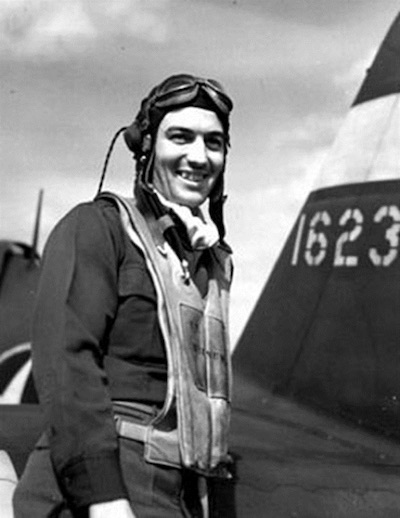
Captain Eugene Everett Barnum, Jr. (1917-1944)
One of my worst memories of this time, was when the word came that Bill Barnum was killed in action. They were neighbors of ours and it hit everyone very hard when this news came. Then, a few weeks later, the news came that his brother Eugene had also been killed in action. We didn’t know how one family could bear the hurt of losing both of their sons. They were both pilots and whenever we heard the song that was popular then, “Coming in on a Wing and a Prayer,” we always thought of them.



























